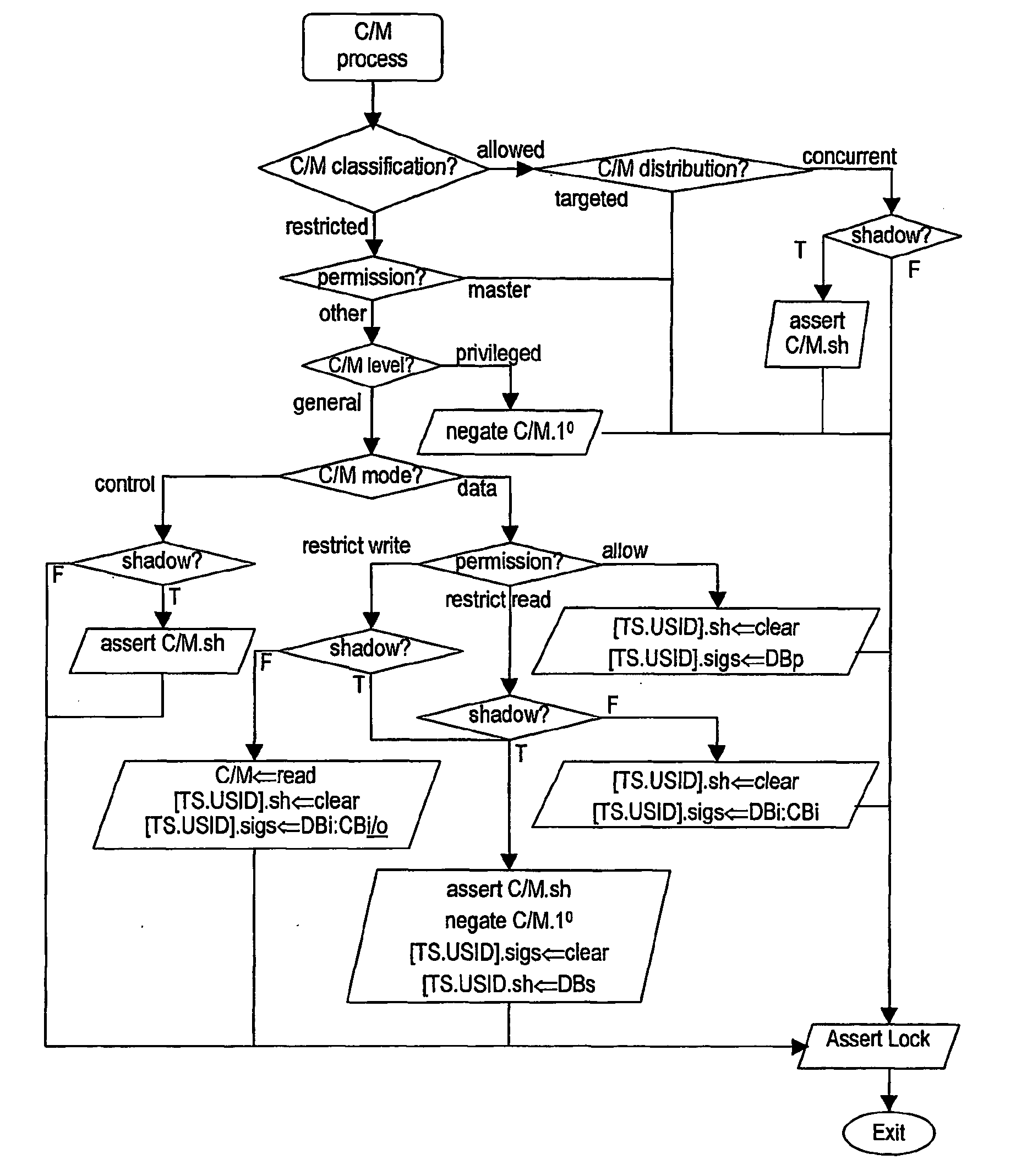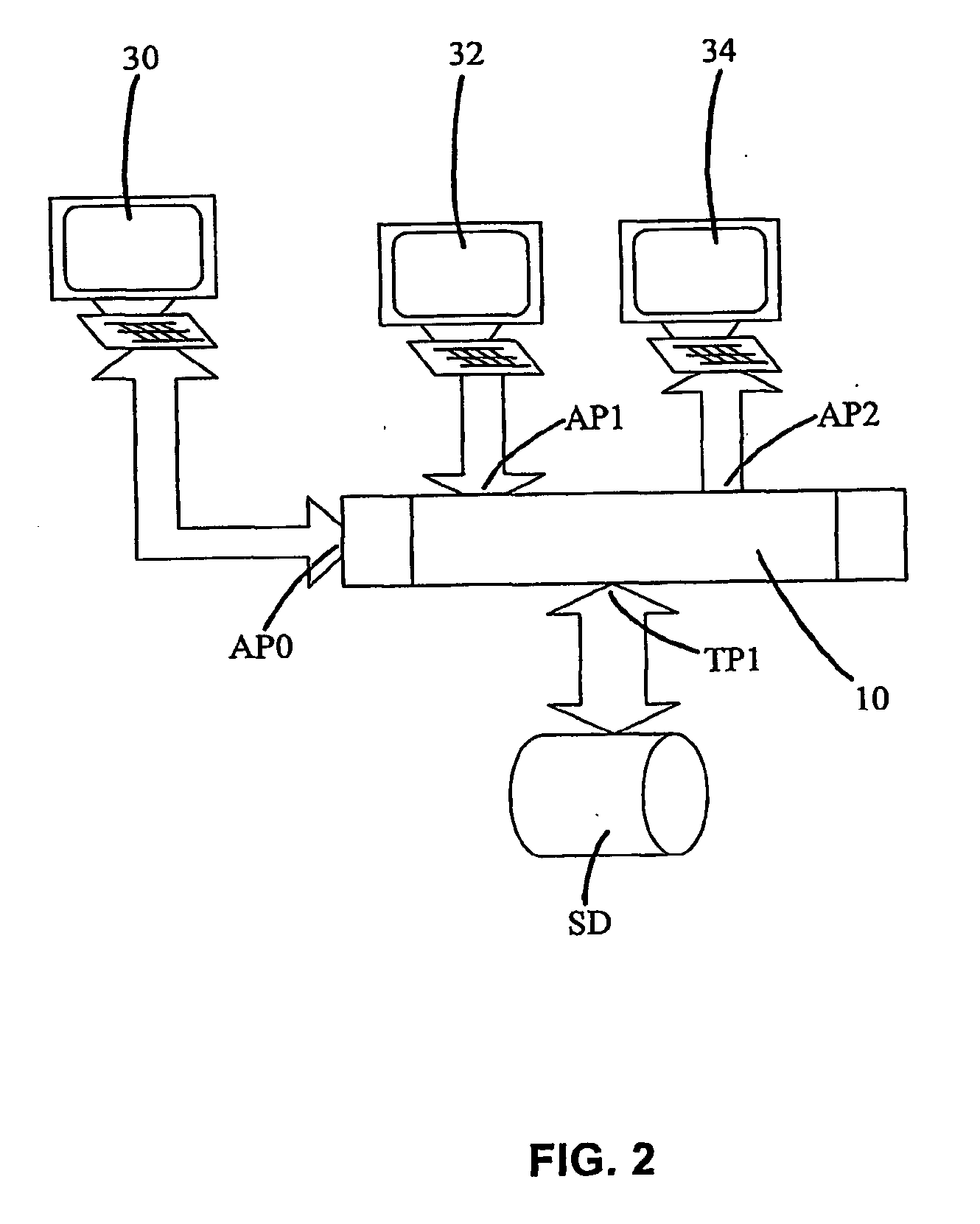Distributive access controller
a technology of access controller and distribution, applied in the direction of micro-instruction address formation, unauthorized memory use protection, instruments, etc., can solve the problem that the client cannot even modify its "own" information stor
- Summary
- Abstract
- Description
- Claims
- Application Information
AI Technical Summary
Benefits of technology
Problems solved by technology
Method used
Image
Examples
Embodiment Construction
[0381] Using DACS to Protect and Provide Restricted Access to Sensitive Data
[0382] The following is a example of the use of DACS, in this case using a combination of RAM oriented DACs 10B and SCSI oriented DACs 10A, as elements of the described secure communication channels in a hybrid network 100 that protects a standard network from intrusions via the internet and less secure internal workstations.
[0383] FIG. 35(A) shows the utilization of SCSI oriented DACs 10A to partition and protect stored data on a standard network that has Internet access by using its unique ability to provide locally controlled (and remotely inaccessible) mapping of data pathways. The proposed layout represents a fault tolerant system with standard internet front-end designed to circumvent "Denial of Service" (DoS) attacks. Agent systems are standard Internet servers dedicated for public access by Internet clients to web and e-mail services etc. Supervisor systems provide local server-like fimctions in the ...
PUM
 Login to View More
Login to View More Abstract
Description
Claims
Application Information
 Login to View More
Login to View More - R&D
- Intellectual Property
- Life Sciences
- Materials
- Tech Scout
- Unparalleled Data Quality
- Higher Quality Content
- 60% Fewer Hallucinations
Browse by: Latest US Patents, China's latest patents, Technical Efficacy Thesaurus, Application Domain, Technology Topic, Popular Technical Reports.
© 2025 PatSnap. All rights reserved.Legal|Privacy policy|Modern Slavery Act Transparency Statement|Sitemap|About US| Contact US: help@patsnap.com



